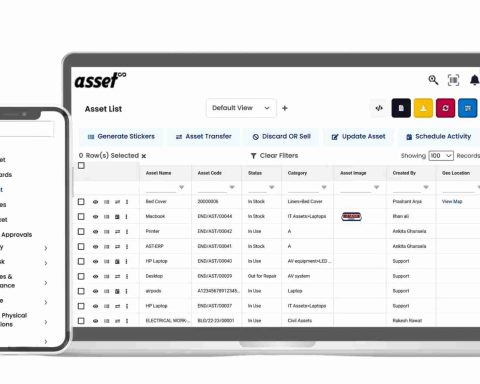Whether you are planning to borrow money to start a business, finance a car, or pursue higher education, there is an appropriate loan you can take out. However, if you are a first-time borrower, it may be difficult to begin to understand how to find the right loan for you. Part of this challenge stems from not knowing very much about the available solutions out there and the terminology involved in money borrowing.
In this guide, we aim to demystify the world of money borrowing, so you can make informed decisions when applying and improve your chances of getting a loan. We will break down some loan services and types available to borrowers, as well as explain some frequently seen terms in the money borrowing space.
Secured vs. Unsecured loans
Before delving into different loan services available to borrowers, we want to answer a commonly asked question about loans: what is the difference between a secured and an unsecured loan?
Secured loans are backed by collateral. The collateral serves as a form of protection for the lender, in case the borrower fails to repay the loan in full. Some examples of secured loans are car loans, where the money is secured by the vehicle being financed. If the borrower fails to make their monthly payments, their vehicle can be seized.
Unsecured loans do not require collateral. They are solely based on the borrower’s creditworthiness, income, and other financial circumstances. The lack of collateral involved results in a higher risk for lenders, which may translate to higher interest. Some examples of unsecured loans are student loans, personal loans, and credit card loans. If the borrower fails to repay the loan in full, the lender has fewer options to recover their losses, and they may resort to taking legal action against the borrower.
Loan services available to borrowers
Personal loans
Personal loans are unsecured loans for individuals, and these loans can be taken out for various purposes. They range from debt consolidation, medical expenses, home improvements, and other needs. Personal loans from personal loan agency typically have fixed interest rates and fixed repayment terms.
Car loans
Car loans are also known as auto loans, and this is money taken out to finance the purchase of a vehicle. These loans are sometimes viewed as monthly payments or instalment payments, as the loan is secured by the vehicle itself. Borrowers make a payment each month over a set term until the amount of money is paid off.
Student loans
Student loans help students cover the costs of higher education, and they are not necessarily just to cover tuition fees. Some loans provided by the government or other lenders may also cover living expenses, and student loan borrowers usually have various repayment options, including deferring payments until after graduation.
Refinancing loans
Loan refinancing is a popular service offered by lenders, and it involves replacing an existing loan with a new loan that has better terms, such as a lower interest rate or a more flexible repayment process. Borrowers may refinance their loans if their credit score has improved since taking out the first loan, and they are now eligible for better repayment terms. They may also refinance to save money on interest or adjust their monthly repayment schedule.
Business loans
Business loans are designed for companies that want to finance their operations, expansions, mergers, acquisitions, and other ventures. These loans can be secured or unsecured – it depends on the lender’s requirements and the purpose of the loan, as well as the borrower’s creditworthiness.
Consolidation loans
Loan consolidation is another popular service offered by many lenders. It refers to the combination of multiple debts into a single loan with a single monthly repayment. This can be a good option for juggling several debts and wishing to streamline their repayment process, while potentially lowering their interest rate and increasing their repayment schedule flexibility.
For those who wish to consolidate their loans, it is best to work with a loan consolidation provider to get a comprehensive view of the borrowing landscape locally and to find the best loan options available.
Payday loans
Finally, payday loans are short-term loans that individuals can take out to cover unexpected expenses between paydays. These can cover emergencies of different sorts – medical, home-related, and more. However, these loans often have high interest rates and fees, and they are often a last resort for many borrowers looking to bridge the gap between paydays.
Loan terminology
After having been familiarised with the different types of loan types and solutions, borrowers need to ensure they understand loan terminology. These are the terms that borrowers encounter when they apply for and take out a loan. It is essential to know what they mean, as they have a significant impact on the borrower’s overall financial plans and their repayment schedule.
Principal
The principal refers to the initial amount of money that the lender lends the borrower. It is the base amount upon which interest is calculated later.
Interest
Interest is the cost of borrowing money. When lenders lend money, they are offering a service, and interest is the cost of the service. It is expressed as a percentage of the principal, such as 3% or 5%. Usually, lenders have different interest rates for different borrowers, depending on the latter’s creditworthiness and the total amount they are borrowing.
Annual Percentage Rate (APR)
The Annual Percentage Rate (APR) is the total cost of borrowing over one year. This rate includes fees such as the interest charged, or other costs associated with the loan. Borrowers use the APR to compare loan options, with the lower the APR the better.
Term
A term is the duration or length of time the borrower is given to pay back the loan in full. It is usually expressed in months or years, depending on the size of the loan. Shorter loan terms may result in higher monthly payments but lower overall interest costs, while longer terms have lower monthly payments but higher overall interest costs.
Collateral
In a loan, a collateral is an asset that a borrower pledges to the lender as a security for the loan. This asset can be their property, or a valuable item like a car. If the borrower fails to repay the loan in full within a specified period, the lender has the right to seize the collateral to recover their losses.
Credit Score
A credit score is a representation of an individual or a company’s trustworthiness. Lenders use credit scores to assess the borrower’s ability to repay the loan, based on the borrower’s past financial behaviour. A higher credit score may lead to higher trust from the lender, who can lower interest rates or permit a more flexible repayment schedule.
Default
Default occurs when a borrower fails to meet their agreed-upon obligations. Some common examples include missing a payment or violating the loan agreement. Defaulting on a loan can have serious consequences, including potential legal action taken by the lender against the borrower.
Prepayment
Prepayment is the act of repaying a loan before the scheduled due date. While for borrowers, this may be a good thing, for lenders it can create conflict. This is because prepayment prevents lenders from charging borrowers the agreed-upon interest that they would have earned, if the borrower stuck to the repayment timeline. Some loans therefore have prepayment penalties.
Amortisation
Amortisation is the process of paying a loan off over time, through regular payments. It involves both principal and interest, and interest is typically higher at the beginning of the loan term. It decreases gradually as the principal balance reduces.
Origination fee
Some lenders charge a one-time, upfront fee when they process a borrower’s loan application. This is the origination fee. It is usually a percentage of the loan amount, and it can be deducted from the loan disbursement.
Before taking out a loan…
Now that you have come to learn more about the different loan types and some terminology, you may be more confident in taking out a loan. However, before filing a loan application, you should always ensure that you understand its specific terms and conditions of the lender and the service. You should also always assess your financial situation before borrowing, never taking out more money than you can repay within a reasonable time.






